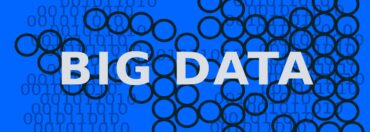
Ever thought about a world where your fridge tells you when you’re running low on milk? Or your watch tracks your heart rate and gives you health tips? Welcome to the Internet of Things (IoT), where everyday objects become smart and connect to the internet to make your life easier.
What’s IoT All About?
IoT is like giving everyday objects a voice. It’s all about connecting things like your phone, your car, your home appliances – you name it – to the internet. These things have sensors, software, and other tech that let them share data and communicate with each other. So, instead of just being “dumb” objects, they become smart and can do cool stuff.
How Did We Get Here?
The idea of IoT isn’t new. It’s been brewing since the 1980s when some clever folks at Carnegie Mellon University hooked up a vending machine to the internet. But things really took off in the 2000s with better tech and more internet access. Now, IoT is everywhere, from your smartwatch to your smart home speaker.
But the real boom happened in the past decade. In 2010, there were around 12.5 billion connected devices worldwide. Fast forward to 2020, and that number skyrocketed to over 50 billion, according to estimates by IoT Analytics. That’s an impressive fourfold increase in just a decade! And it’s showing no signs of slowing down. By 2030, experts predict there will be over 125 billion connected devices globally, revolutionizing industries and transforming the way we live and work.
This explosion of IoT devices has been driven by advancements in technology, such as the miniaturization of sensors, the proliferation of low-power connectivity options like Bluetooth and Wi-Fi, and the advent of cloud computing and big data analytics. These technologies have made it cheaper and easier than ever to connect devices to the internet and collect and analyze data in real-time, unlocking new possibilities for innovation and efficiency.
But it’s not just about the tech – it’s also about the demand for connected experiences from consumers and businesses alike. People want convenience, efficiency, and personalization in everything they do, whether it’s controlling their home’s temperature from their smartphone or tracking their fitness goals with a wearable device. And businesses are eager to tap into the wealth of data generated by IoT devices to gain insights into customer behavior, optimize operations, and drive growth.
Cool Stuff Happening Now
IoT isn’t just a buzzword – it’s changing the way we live. In your home, you’ve got smart gadgets like thermostats that learn your habits and adjust the temperature to save energy. In healthcare, you’ve got wearables that track your steps, monitor your heart rate, and even detect if you’re having a health issue. And in cities, you’ve got smart traffic lights that adjust based on traffic flow, making your commute smoother.
But it’s not all smooth sailing for IoT. There are challenges, like security concerns – because with all this data flying around, there’s a risk of hackers getting in. Then there’s the problem of different devices not speaking the same language, which makes it hard for them to work together. And let’s not forget about privacy – with all these gadgets collecting data, who’s making sure it’s being used responsibly?
What’s Next?
Despite the challenges, the future of IoT looks bright. Think AI and machine learning making your gadgets even smarter. Imagine your smart fridge knowing your food preferences and suggesting recipes. Or your car navigating traffic on its own. Plus, there’s talk of using blockchain tech to make IoT even more secure and trustworthy.
So, how does all this IoT stuff affect you? Well, imagine waking up to a house that’s already warmed up to your preferred temperature. Or getting a notification on your phone that your elderly parent’s heart rate is a bit high, so you can check in on them. It’s all about making your life easier and more connected.
Real-Life Examples
There are already tons of cool examples of IoT in action. Take Amazon’s Alexa – it’s like having a personal assistant in your home, ready to answer questions, play music, or even order groceries for you. And in healthcare, there are devices like Medtronic’s Guardian Connect, which helps diabetes patients manage their blood sugar levels remotely.
But IoT isn’t just about gadgets – it’s also making industries more efficient and sustainable. Take the agriculture sector, for example. IoT-enabled precision farming techniques are helping farmers increase crop yields while minimizing water and pesticide usage. According to a report by MarketsandMarkets, the precision agriculture market is expected to reach $12.9 billion by 2025, driven by the adoption of IoT technologies.
And in manufacturing, IoT is revolutionizing the way factories operate. By connecting machines and equipment to the internet, manufacturers can monitor performance in real-time, predict maintenance needs, and optimize production schedules. This shift towards smart manufacturing, also known as Industry 4.0, is projected to generate $1.5 trillion in value globally by 2025, according to McKinsey & Company.
Ethical Stuff to Think About
But as we dive deeper into the world of IoT, we need to think about the ethical side of things. Like, who owns the data collected by these devices? And how can we make sure it’s being used responsibly? It’s important to set clear rules and regulations to protect people’s privacy and ensure that IoT is used for good.
Wrapping Up
In a nutshell, IoT is all about making everyday objects smarter and more connected. From your home to your car to your health, IoT is changing the way we live, work, and play. And while there are challenges ahead, the future looks bright – as long as we use this tech responsibly.
